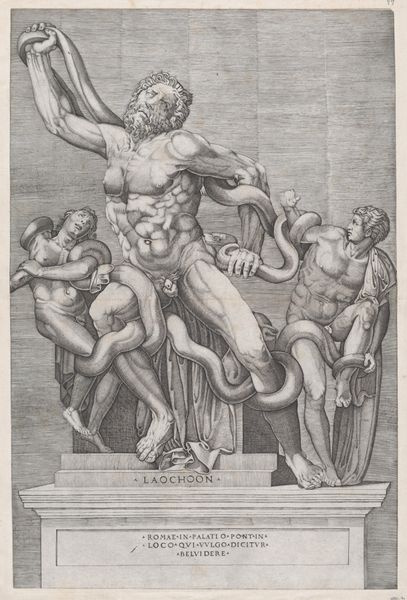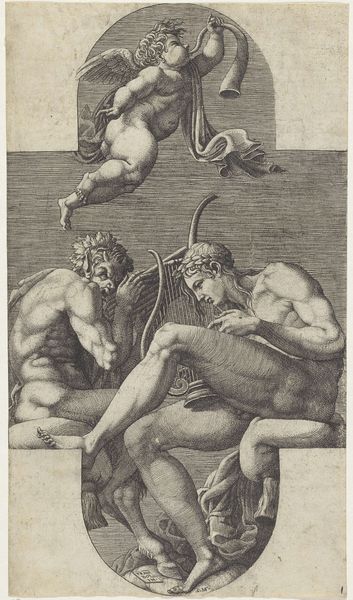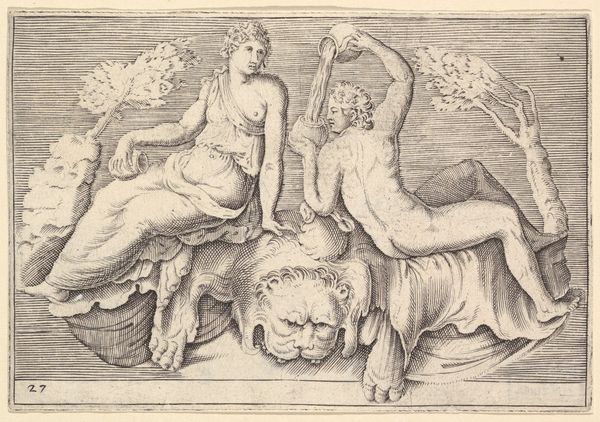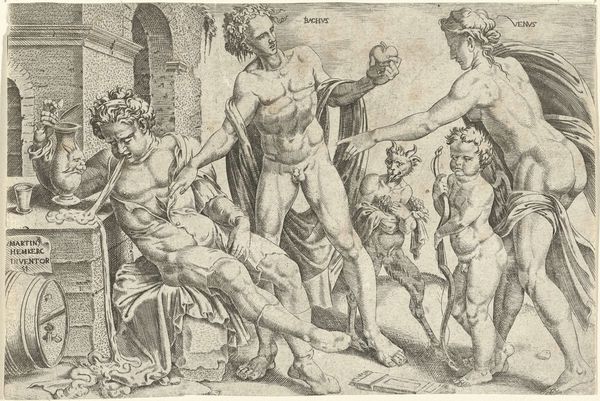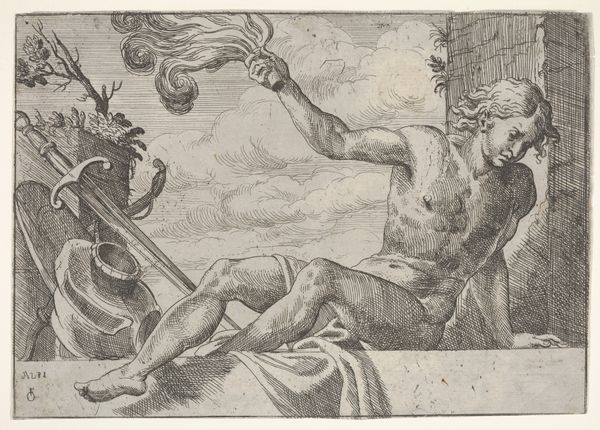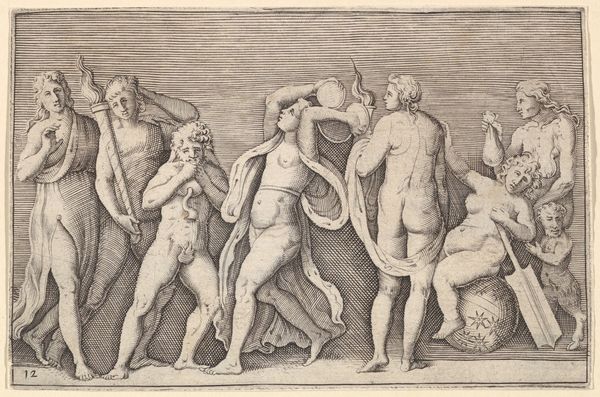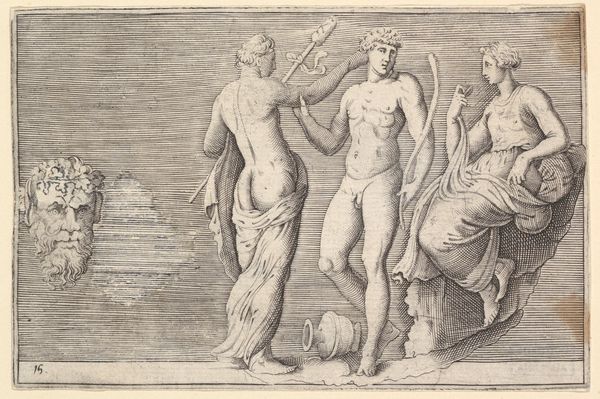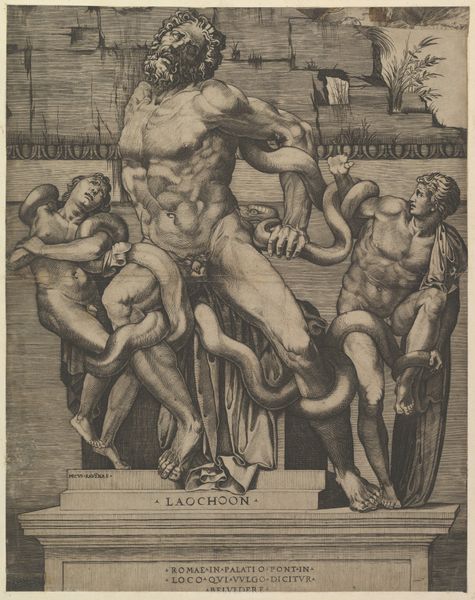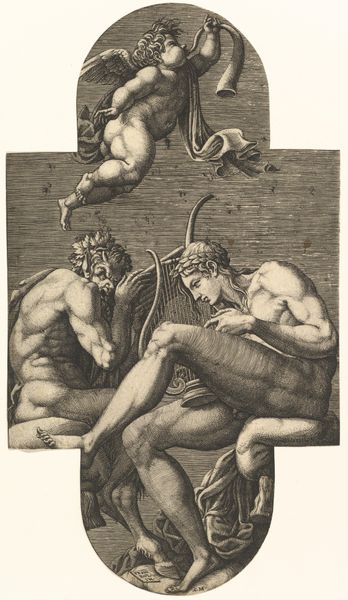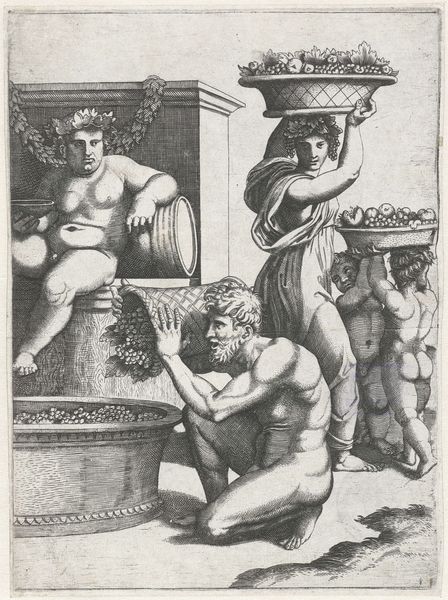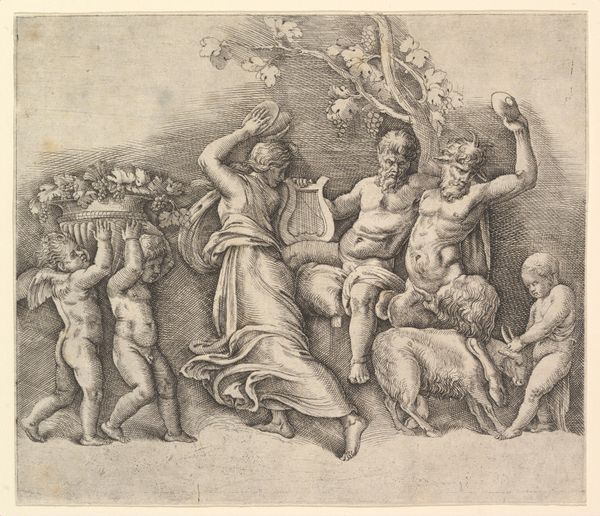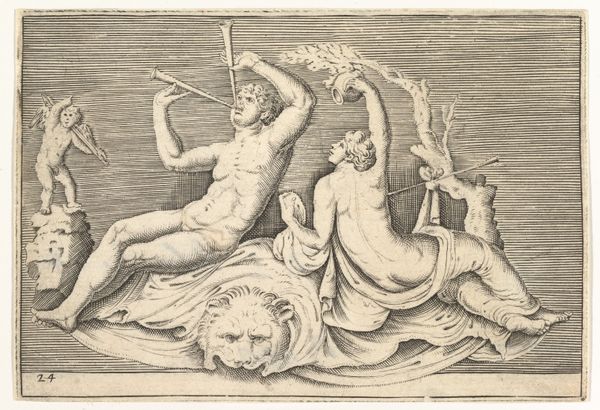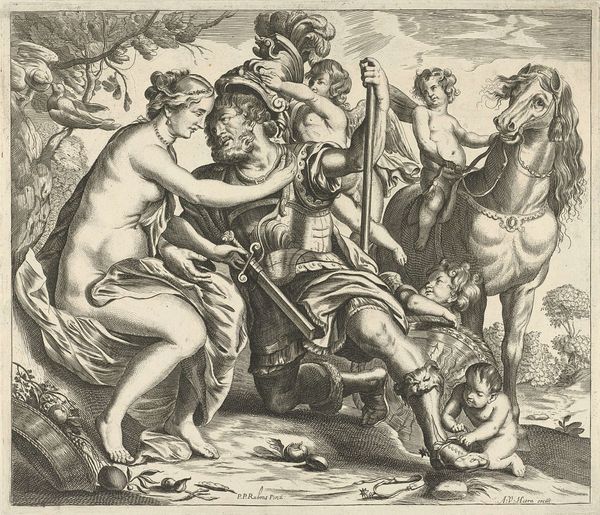
print, engraving
# print
#
old engraving style
#
classical-realism
#
figuration
#
history-painting
#
italian-renaissance
#
nude
#
engraving
Dimensions: height 107 mm, width 175 mm
Copyright: Rijks Museum: Open Domain
Editor: This engraving, "Apollo bewaakt de kudde van Admetus" from somewhere between 1510 and 1527, made by Marcantonio Raimondi, really strikes me. It’s like a tableau of serenity and watchful power all at once. What kind of stories do you see woven into this image? Curator: I see a fascinating confluence of myth and morality, steeped in the symbolism of classical antiquity. Note how Apollo, despite his divine status – subtly emphasized by the laurel wreath – is humbled, guarding Admetus’ herd. Do you sense the layers of meaning embedded within the pastoral scene? Editor: Yes, but what does Apollo guarding a herd *mean*? Curator: It’s about atonement and service, themes deeply rooted in the story of Apollo’s temporary servitude to Admetus. Look at the dog: Loyalty? Vigilance? What does the snake coiled around the tree tell you? Think of resurrection or cyclical time, or perhaps something darker and more deceptive. The objects aren’t just ‘there.’ They evoke a memory. Editor: I hadn’t thought of it that way; I see them more like figures in a play. Curator: Precisely. And the 'stage' itself -- the ruined classical architecture -- it alludes to a lost golden age and underscores the cyclical nature of time, and perhaps the fallibility of even the gods. Editor: It's amazing how much history is packed into a single image. Curator: Indeed, art becomes a cultural mirror reflecting not just a moment, but a whole world of ideas and beliefs. I hope it also highlights how symbols are malleable through time and their resonance persists regardless.
Comments
No comments
Be the first to comment and join the conversation on the ultimate creative platform.
